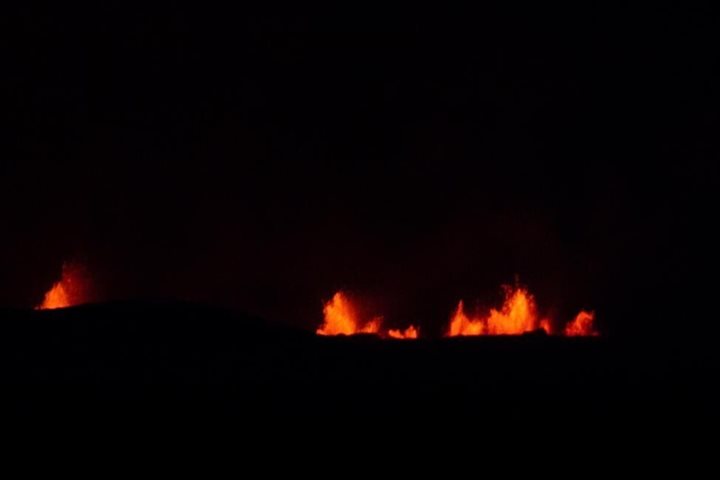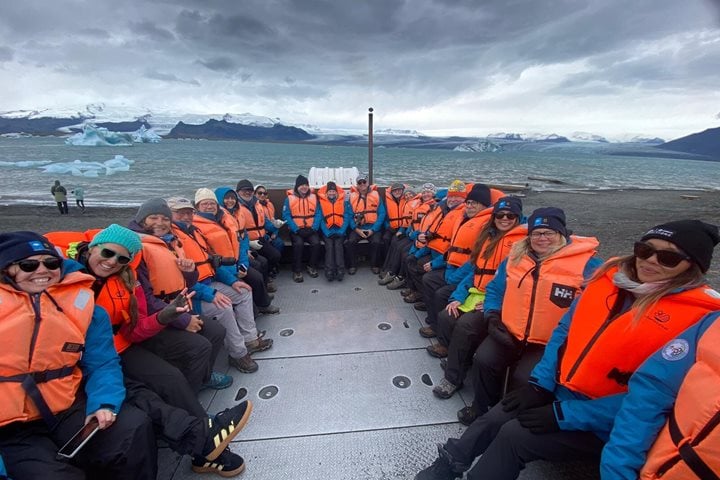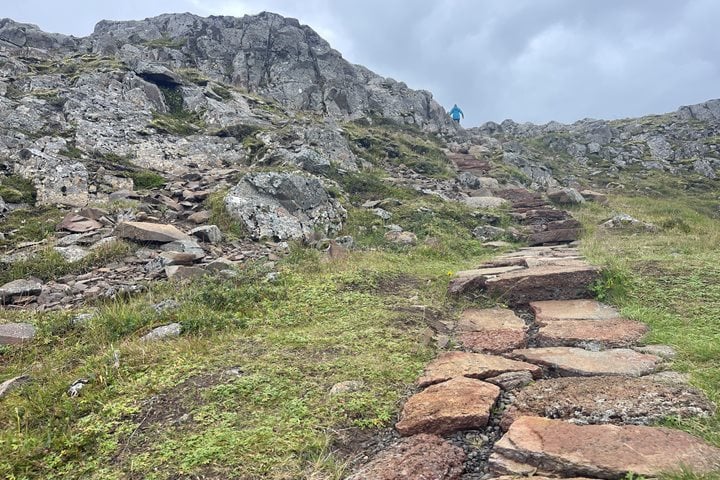National Geographic Explorer arrived in Djúpivogur, a natural harbor in the southeast of Iceland, for a packed day of exploring. Forty-six intrepid explorers disembarked early in the morning and boarded a bus to Vatnajökull, known as Lake Glacier—the largest glacier in Iceland, covering an area of 8,100 km2 or about eight percent of the country. On the way, our bus drove through vast, peaceful landscapes, passing several bays. One of those bays, Swan Bay, is named for the hundreds of whooper swans (Cygnus cygnus) that gather there, filling the area with their slender, white bodies and reverberating sounds.
We arrived at Vatnajökull National Park, and after picking up adequate gear, walked 2.4 km to the glacier’s base. Once fitted with crampons, we walked out onto the glacier and spotted bright blue ice.
We meandered past small waterfalls on our walk back and then boarded the bus for Jökulsárlón or Glacier River Lagoon. At the spectacular lake, we took photos of the icebergs that calve from the glacier.
This region is occupied by abundant wildlife typical of the far North. Great skuas (Stercorarius skua) and Arctic skuas (Stercorarius parasiticus) regularly patrolled the Arctic tern (Sterna paradisaea) colonies. Terns feed at the river mouth, and when they successfully trap fish, they are chased by the Arctic skuas until they release their prey. At times, some of the great skuas prey on the unattended eggs or chicks of the Arctic terns—such is the cycle of life.
On the tundra, we encountered common ringed plovers (Charadrius hiaticula), protecting their chicks from passersby, as well as barnacle geese (Branta leucopsis), a cliff-dwelling species flourishing in Iceland but originally from Greenland and Svalbard, Norway. After enjoying the icebergs and birds, we finally made our way back to the ship.










